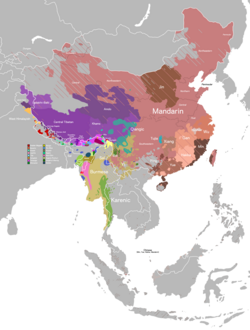| Bori | |
|---|---|
| Bori-Karko | |
| Region | Arunachal Pradesh |
Sino-Tibetan
| |
| Dialects |
|
| Language codes | |
| ISO 639-3 | (included under Adi [adi]) |
| Glottolog | bori1243 |
| ELP | Bori |
 Bori is classified as Definitely Endangered by the UNESCO Atlas of the World's Languages in Danger | |
Bori is a Tani language of India. Bori is spoken in Payum Circle, West Siang District, Arunachal Pradesh (Megu 1988).
Contents
Bori is spoken by the Bori, an indigenous tribal people of India.
Post (2013) [1] and Ethnologue classify Karko as a variety of Bori. [2]
